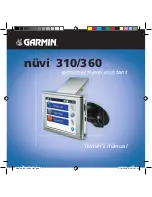
JP14-R-LP & JP14-Q-LP F
ALCOM
GPS R
ECEIVERS
V
ERSION
1.0.0
but the navigation solution still needs to be computed, thus consuming power is
less than in the full power state.
Standby state
In the standby state, power remains applied to the JP14 family, but the RF section
is completely powered off and the clock to the baseband is stopped. About 600
µA of current is drawn in this state for the internal core regulator, RTC and battery-
backed RAM. The receiver enters this state when a position fix has been
computed and reported. Typically, before shutting down the RTC wakeup register
is programmed to wake up the system sometime in the future.
Remark
: The environment temperature may also affect the power consumption in the Standby state.
Figure 4:
Three system states into the ATP mode.
The transition from Standby state back to the full power is generated through the
internal RTC, which transmits a wake up signal to the GPS engine to switch it on. The
JP14 is woken up and begins to acquire the on view satellites and to collect their
data. Under normal tracking conditions, the receiver is set for a specific update
period (range from 1 to 10 seconds), and a specific sampling time during each
period (range from 200 to 900 ms). The receiver turns to full power state for the
sampling time to collect data, and then operates in Standby state for the remainder
of the update period. The next full-power state is initiated by an RTC wakeup. But in
harsh tracking environments the receiver automatically switches to full power state
to improve navigation performance. When the satellites are sorted according their
signal strength, the fourth satellite determines if the transition will occur or not. The
threshold is 26 dB-Hz. When tracking, conditions return to normal (four or more
satellites with C/No of 30 dB-Hz or higher), the receiver switches back to the power
saving mode.
5.4.3 Push-to-Fix Mode
The Push-to-Fix mode puts the FALCOM JP14 family into a background duty cycle
which provides a periodic refresh of position, receiver time, ephemeris data and RTC
calibration every 10 seconds to 2 hours. The transition of receiver into the Push-to-Fix
mode can be implemented and configured by using either the
Action│Set Low
Power (Trickle Power) …
command available in SiRFDemo evaluation software or
the input command described in chapter
5.4.4
on page
17
.
The PTF period is 30 minutes by default but can be anywhere between 10 seconds
and 2 hours. When the PTF mode is enabled, due to a new PTF cycle, the receiver
This confidential document is the property of FALCOM and may not be copied or circulated without permission.
Page 16
















































